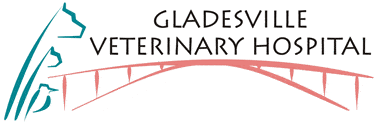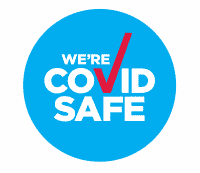Nuclear Medicine
GVH is a Referral Centre for Nuclear Medicine in Sydney and Australia-wide.
Our procedure and treatment plans are unique in the Southern Hemisphere! We scan our patients to enable us to give an exact and individual dose for each patient, no other site has the facility to do this. Individual dosing minimises risks or adverse side effects and allows a better success rate for our patients to go into complete remission. Please contact our team for more detailed information on what we do and how we do this at GVH
Dr Max Zuber developed an expertise in this modality, and we have on site the only dedicated small animal-nuclear medicine veterinary facility in the southern hemisphere. He passes on his legacy to our current team, Dr Fernado Elias, who has a special interest in all things feline Medicine, and Dr Lisa Shaw
We also have on staff Ann Bernar, a qualified Nuclear Medicine Technologist, who while joining us at GVH, works in the human Nuclear Medicine field.
Nuclear medicine is a new diagnostic technique where radioisotopes are injected into the body to study various organ functions. Images of these functions are recorded using a gamma camera. Larger doses of radioisotopes are also given as a form of radiation therapy to treat some forms of cancer.
At GVH our main application for Nuclear Medicine is in the diagnosis and treatment of hyperthyroidism in cats.
The GVH team have experience in dealing in over 3,000 cases of this disease, and we treat 100-150 new patients from all over Australia each year.
Secondly, we see canine patients with thyroid cancer. It is a relatively rare and often fatal disease but treatment with radioactive iodine can often halt progress for an extended period of time.
Bone cancer or Osteosarcoma in dogs is a devastating disease with an extremely high mortality rate. While cures for this disease are elusive, we have been using a radioisotope Samarium 153 to successfully alleviate the pain and temporarily stop the tumour growth in some dogs.
Lameness in dogs can sometimes be difficult to diagnose accurately and performing bone scans in these dogs can often highlight the problem where normal radiographic techniques have failed.
What is nuclear radiation?
Nuclear radiation is radioactivity that comes from the nucleus of certain chemicals. These chemicals are called radioisotopes and are unstable. Just as a rock balanced on the end of a pole is likely to fall and give off energy on the way down, radioisotopes give off energy and particles as they break down or “decay.”
What are the types of nuclear radiation?
There are three types of nuclear radiation – alpha, beta, and gamma. The alpha ray is a big particle and is not used in Nuclear Medicine tests. Beta rays are smaller particles given off from the nucleus and is only found in radioisotopes that are used for treating diseases. The gamma ray is not a particle but rather a small packet of energy. Gamma rays are the usual form of nuclear radiation in Nuclear Medicine testing.
What happens to the nuclear radiation?
Radioisotopes are like fires – fires burn at different temperatures for different periods of time depending on the type of fuel used. They all go out in the end. Radioisotopes give off radioactivity of different energies for different periods of time and decay away completely in the end. Every radioisotope has a certain “half-life.”
“Half-life” is the time that it takes for half the radiation to go away. If the length of time is short, the radioactivity disappears quickly. The most common Nuclear Medicine radioisotope is called Technetium-99m and this has a half-life of six hours. This means that after one day, there have been four half-lives and only 1/16 of the radioactivity is left. This makes it very safe.
How does Nuclear Medicine compare with X-rays?
In Nuclear Medicine, the radiation is inside the person shining out and is detected by the gamma camera. In an x-ray, the radiation is shone through from the outside by a machine and a photographic film on the other side detects what passes through the body completely. The doses of radiation from Nuclear Medicine tests are like those from X-ray tests and are kept as low as possible.
Are we normally exposed to radiation?
We are all exposed to radiation every day. This comes from three main places:
- Cosmic rays from outer space.
- Radiation from the environment occurs in building materials like bricks and mostly in the form of radioactive radon gas.
- Radiation from inside our bodies from naturally occurring radioisotopes in the foods we eat, particularly potassium.
The international unit for radiation exposure is the Sievert (Sv). Over a year, we all get about two thousandths of a Sievert of radiation (2 mSv) from these sources. The dose of radiation from scans and x-rays ranges from 0.5-10 mSv.
Do the levels of natural radiation vary?
Radiation levels are different in various parts of the world depending on the natural environment. In some places, there is a lot more radiation in the soil. For example, in Kerala in India, the sand is radioactive. Also, the level of radon gas varies about 100-fold depending on where you are in the world. The level in Sydney is 5Bq/m’. The level of cosmic radiation is greater at higher altitudes. For example, it is twice as much at Katoomba than in Gladesville. A plane trip from Sydney to London gives you 6 months’ cosmic radiation in 1 day.
What are the harmful effects of radiation?
If you are unlucky to be close to an atomic explosion, the effect is death! The harmful effects of low-level radiation are cancer and fetal abnormalities. Pregnant women should not have a scan unless necessary.
How low is the risk of cancer from scans?
The risk of cancer from scans is extremely low. This is calculated from the number of cancers occurring in survivors of the American atomic bomb explosions in Japan, estimating how much radiation they got and making forecasts (“extrapolations”) from these results. For the average person, your chance of getting cancer in your life is about 300 out of 1,000. If you have a scan, your chances increase to about 300.3 out of 1,000. This increased risk is about the same as your risk of dying because of:
- driving 100,000 km in a year
- working in a factory for 2,000 days (about 5 and a half years)
- smoking 250 cigarettes
- drinking 100 liters of wine
Therefore, the scans carry extremely low risks and the benefits in aiding our diagnosis and treatment plans can be huge. Please do not hesitate to contact the team at GVH for further information






